Flatback Sea Turtle
- April 2, 2024
- 0 comment
The Flatback Sea Turtle, scientifically known as Natator depressus, is a unique species of marine turtle characterized by its flattened shell and distinct behaviors. Unlike other sea turtles, Flatbacks have a more limited distribution, primarily found in the waters of northern Australia and southern Papua New Guinea. Their flattened shell, olive-gray in color, sets them apart from their relatives. These turtles prefer shallow coastal habitats, including coral reefs, seagrass beds, and estuaries, where they forage on a diet of seagrasses, algae, jellyfish, and small crustaceans.
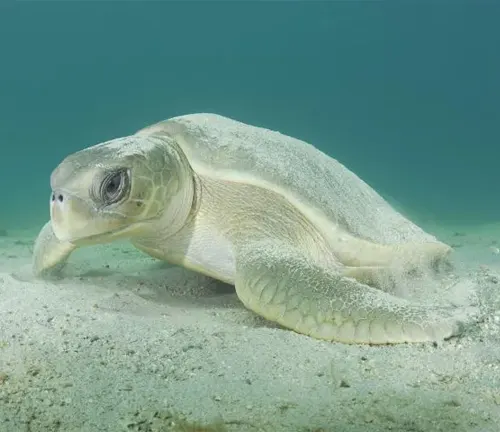
Flatbacks exhibit site fidelity, returning to the same nesting sites year after year during the summer months to lay their eggs in sandy beaches. Despite not being listed as endangered, Flatback Sea Turtles face threats from human activities such as habitat destruction, pollution, and accidental capture in fishing gear. Conservation efforts aim to protect their habitats and mitigate these threats, ensuring the continued survival of this unique marine species.
| Specifications | Details |
|---|---|
| Scientific Name | Natator depressus |
| Common Name | Flatback Sea Turtle |
| Shell Color | Olive-gray |
| Shell Shape | Flattened |
| Size (Adult) | 90 to 100 centimeters in length |
| Weight (Adult) | 70 to 90 kilograms |
| Distribution | Waters of northern Australia and southern Papua New Guinea |
| Habitat | Shallow coastal waters, coral reefs, seagrass beds, estuaries |
| Diet | Seagrasses, algae, jellyfish, small crustaceans |
| Nesting Behavior | Site fidelity, returns to same nesting sites annually |
| Nesting Season | Summer months |
| Nesting Sites | Sandy beaches |
| Clutch Size | Around 50 to 70 eggs |
| Incubation Period | Approximately 50 to 60 days |
| Conservation Status | Not listed as endangered |
| Threats | Habitat destruction, pollution, accidental capture in fishing gear |
| Conservation Efforts | Habitat protection, bycatch reduction, community engagement initiatives |
| Importance in Ecosystem | Maintains health of seagrass beds and coral reefs, indicator of ecosystem health and biodiversity |
| Unique Adaptations | Ability to withstand fluctuations in salinity levels |
Flatback Sea Turtle: A Unique Marine Species
The Flatback Sea Turtle, scientifically known as Natator depressus, is one of the lesser-known species of marine turtles. Unlike its more famous relatives such as the Loggerhead or Green sea turtles, the Flatback has distinct characteristics and behaviors that set it apart. In this article, we’ll explore the fascinating world of the Flatback Sea Turtle, from its physical features to its conservation status.
Physical Characteristics
Shell
The most prominent feature of the Flatback Sea Turtle is its shell, which is relatively flat compared to other sea turtle species. This flattened shell, or carapace, is olive-gray in color and has scales with a slightly serrated edge.
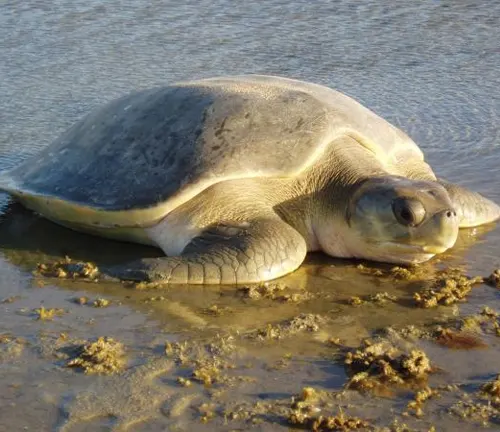
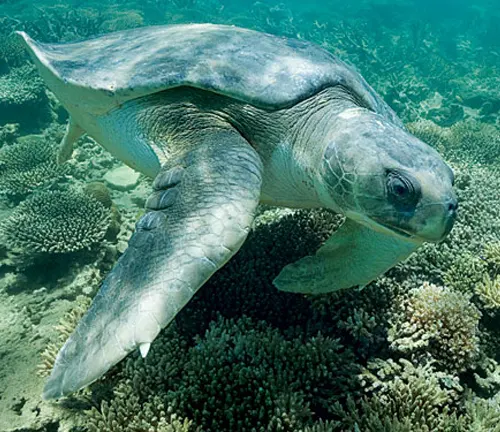
Size and Weight
Flatback Sea Turtles are smaller in size compared to other sea turtle species. On average, adults measure around 90 to 100 centimeters in length and weigh between 70 to 90 kilograms. However, there can be variations in size depending on factors such as gender and geographic location.
Habitat and Distribution
Geographic Range
Flatback Sea Turtles are endemic to the waters of Australia and Papua New Guinea. They primarily inhabit the shallow coastal waters of these regions, including coral reefs, seagrass beds, and estuaries.

Preferred Habitats
Unlike some other sea turtle species that undertake long-distance migrations, Flatbacks tend to stay within their preferred habitat range throughout their lives. They are commonly found in areas with abundant food sources and suitable nesting sites.
Diet and Feeding Habits
Flatback Sea Turtles are omnivorous, feeding on a variety of marine plants and invertebrates. Their diet typically includes seagrasses, algae, jellyfish, and small crustaceans. They forage along the seabed, using their sharp beaks to crush and consume their prey.
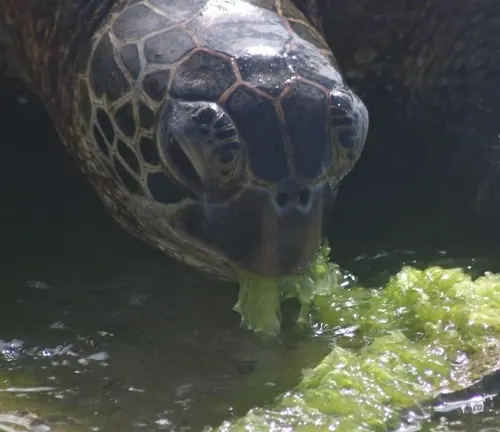
Reproduction and Life Cycle
Nesting Behavior
Flatback Sea Turtles nest exclusively on the sandy beaches of northern Australia and southern Papua New Guinea. Female turtles return to the same nesting sites year after year, usually during the summer months. They dig shallow nests in the sand and lay clutches of around 50 to 70 eggs.
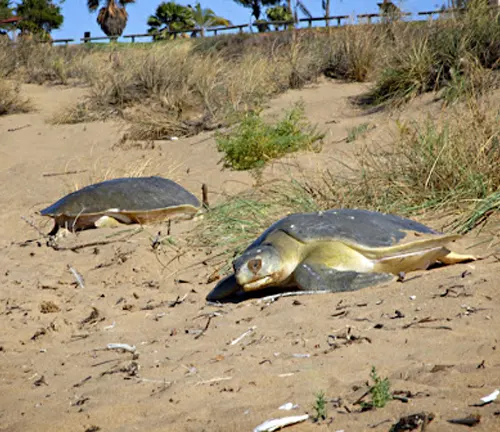
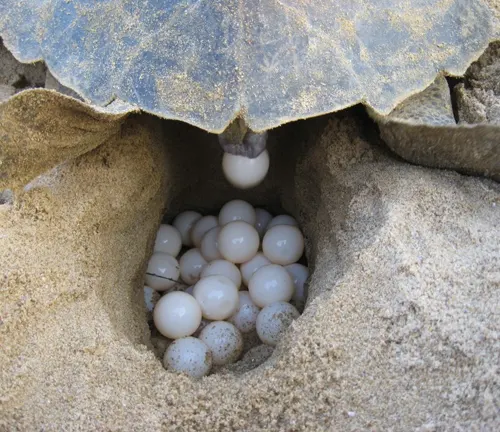
Eggs and Incubation
The incubation period for Flatback Sea Turtle eggs is approximately 50 to 60 days. Hatchlings emerge from the nests and make their way to the ocean, facing various predators and environmental challenges during this critical stage of their life cycle.
Threats and Conservation Status
Human Impact
Flatback Sea Turtles face numerous threats from human activities, including habitat destruction, pollution, and accidental capture in fishing gear. Coastal development and the disturbance of nesting sites also pose significant risks to their survival.
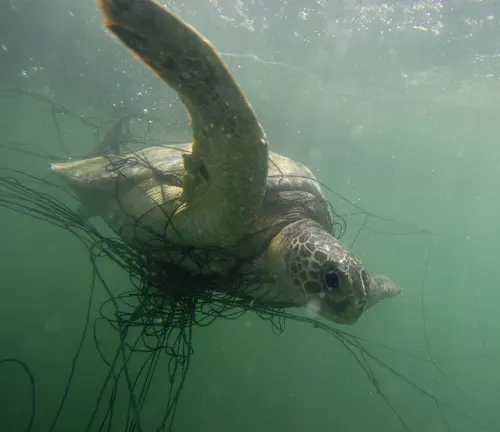
Conservation Efforts
Efforts to protect Flatback Sea Turtles include the establishment of marine protected areas, conservation initiatives aimed at reducing bycatch in fishing operations, and community-based education programs. Researchers and conservationists are working together to better understand the species’ needs and implement effective conservation strategies.
Importance in Ecosystem
Flatback Sea Turtles play a crucial role in marine ecosystems, helping to maintain the health of seagrass beds and coral reefs through their grazing activities. They also serve as indicators of ecosystem health and biodiversity, making them valuable subjects for scientific study and conservation efforts.
Unique Adaptations
One of the unique adaptations of Flatback Sea Turtles is their ability to withstand fluctuations in salinity levels. This adaptation allows them to inhabit a wide range of coastal habitats, including estuaries and mangrove swamps, where salinity levels may vary significantly.
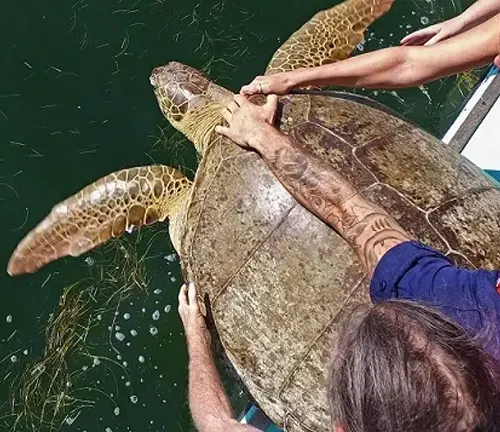
Interactions with Humans
Flatback Sea Turtles have long been part of the cultural and spiritual heritage of Indigenous Australian communities. However, human activities such as egg harvesting and habitat destruction have threatened their populations in recent decades. Conservation efforts aim to mitigate these impacts and ensure the continued survival of this unique species.
Conservation Challenges
Despite ongoing conservation efforts, Flatback Sea Turtles continue to face numerous challenges, including habitat loss, pollution, and climate change. Addressing these threats requires coordinated action at local, regional, and global levels to protect critical habitats and reduce human impacts on marine ecosystems.
Research and Study Initiatives
Researchers are actively studying Flatback Sea Turtles to gain insights into their behavior, population dynamics, and habitat requirements. Advances in technology, such as satellite tracking and genetic analysis, have provided valuable data for conservation planning and management.
Future Prospects
The future of Flatback Sea Turtles depends on our collective efforts to address the threats they face and protect their habitats. By raising awareness, implementing sustainable fishing practices, and supporting conservation initiatives, we can help ensure that these unique marine turtles thrive for generations to come.
Interesting Facts
- Flatback Sea Turtles are named for their distinctive flattened shell, which sets them apart from other sea turtle species.
- Unlike some sea turtles that migrate over long distances, Flatbacks tend to stay within their preferred habitat range.
- Female Flatback Sea Turtles exhibit site fidelity, returning to the same nesting sites year after year to lay their eggs.
- The diet of Flatback Sea Turtles includes a variety of marine plants and invertebrates, making them important contributors to marine ecosystems.
- Conservation efforts for Flatback Sea Turtles include habitat protection, bycatch reduction, and community engagement initiatives aimed at promoting coexistence with human activities.
Different Species
Green Sea Turtle
(Chelonia mydas)
Known for its greenish-colored fat deposits and primarily herbivorous diet, the Green Sea Turtle is one of the largest sea turtle species. It inhabits tropical and subtropical waters around the world.
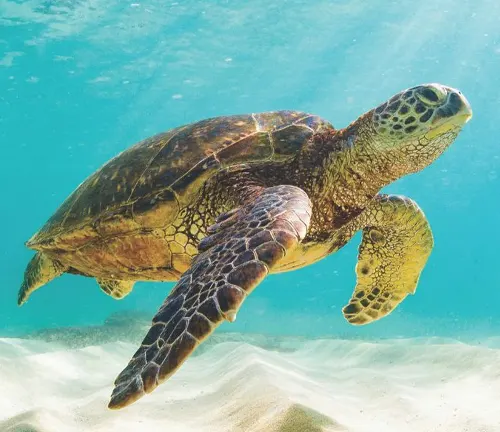
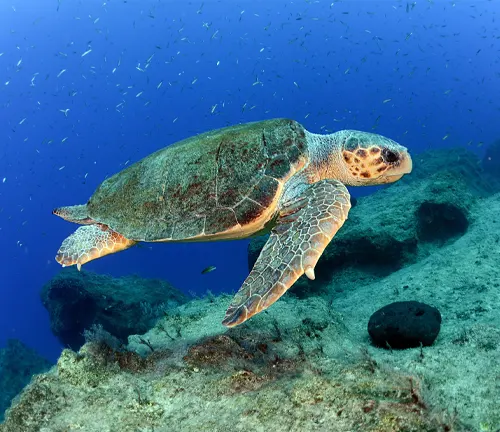
Loggerhead Sea Turtle
(Caretta caretta)
Named for its large head and powerful jaws, the Loggerhead Sea Turtle is distributed throughout the temperate and subtropical regions of the Atlantic, Pacific, and Indian Oceans.
Hawksbill Sea Turtle
(Eretmochelys imbricata)
Recognizable by its hawk-like beak and colorful shell patterns, the Hawksbill Sea Turtle inhabits coral reefs and rocky coastlines in tropical and subtropical waters.
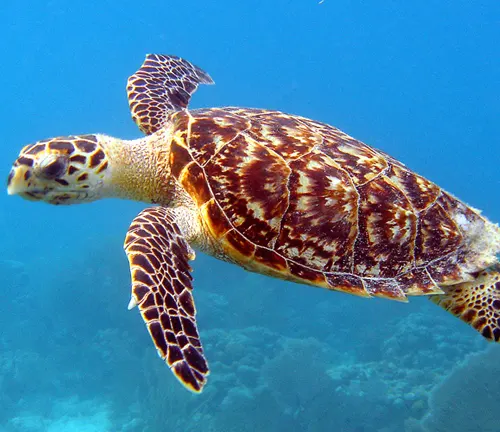

Kemp’s Ridley Sea Turtle
(Lepidochelys kempii)
The smallest and most endangered species of sea turtle, Kemp’s Ridley Sea Turtle is found primarily in the Gulf of Mexico and along the eastern coast of the United States.
Olive Ridley Sea Turtle
(Lepidochelys olivacea)
Named for its olive-colored shell, the Olive Ridley Sea Turtle is known for its mass nesting events, or arribadas, where thousands of turtles come ashore to lay their eggs simultaneously.

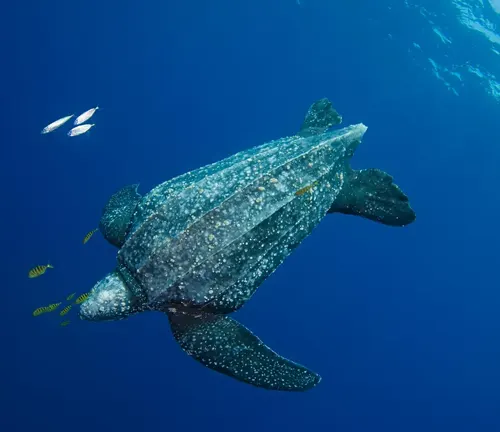
Leatherback Sea Turtle
(Dermochelys coriacea)
The largest and most unique species of sea turtle, the Leatherback Sea Turtle lacks a hard shell and instead has a leathery, rubbery skin. It has a worldwide distribution and is known for its deep-sea diving capabilities.
Frequently Asked Questions (FAQs)
- Are Flatback Sea Turtles endangered?
While Flatback Sea Turtles are not currently listed as endangered, they face conservation challenges due to habitat loss and human activities. - Do Flatback Sea Turtles migrate like other sea turtle species?
Flatback Sea Turtles tend to stay within their preferred habitat range and do not undertake long-distance migrations like some other sea turtle species. - What is the biggest threat to Flatback Sea Turtles?
Human activities such as habitat destruction, pollution, and accidental capture in fishing gear pose significant threats to Flatback Sea Turtle populations. - How can I help protect Flatback Sea Turtles?
You can support conservation efforts by participating in beach clean-ups, reducing plastic consumption, supporting sustainable fishing practices, and spreading awareness about the importance of protecting marine habitats. - Where can I see Flatback Sea Turtles in the wild?
Flatback Sea Turtles are primarily found in the waters of northern Australia and southern Papua New Guinea. Visitors to these regions may have the opportunity to observe them in their natural habitat, particularly during nesting season. - What do Flatback Sea Turtles eat?
Flatback Sea Turtles are omnivorous, feeding on a variety of marine plants and invertebrates such as seagrasses, algae, jellyfish, and small crustaceans. - How many eggs do Flatback Sea Turtles lay?
Female Flatback Sea Turtles typically lay clutches of around 50 to 70 eggs in shallow nests dug in sandy beaches. - What is the incubation period for Flatback Sea Turtle eggs?
The incubation period for Flatback Sea Turtle eggs is approximately 50 to 60 days, after which hatchlings emerge and make their way to the ocean. - Do Flatback Sea Turtles have any natural predators?
While hatchlings may face predation from birds, crabs, and other predators on land, adult Flatback Sea Turtles have few natural predators due to their large size. - How long do Flatback Sea Turtles live?
The lifespan of Flatback Sea Turtles is not precisely known, but they are estimated to live several decades in the wild, with some individuals possibly living up to 50 years or more. - What role do Flatback Sea Turtles play in their ecosystem?
Flatback Sea Turtles play a crucial role in marine ecosystems by grazing on seagrasses and controlling populations of prey species, thus contributing to ecosystem balance and health. - Are Flatback Sea Turtles affected by climate change?
Climate change can impact Flatback Sea Turtles through rising sea levels, changes in ocean temperatures, and altered nesting habitats, posing additional threats to their survival.




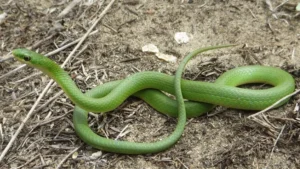
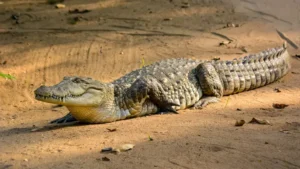

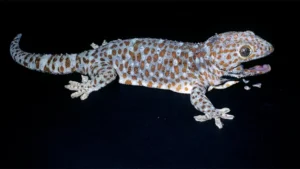

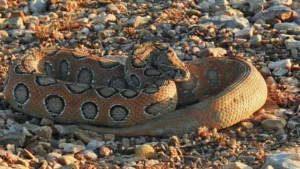
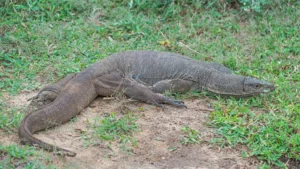



Leave your comment